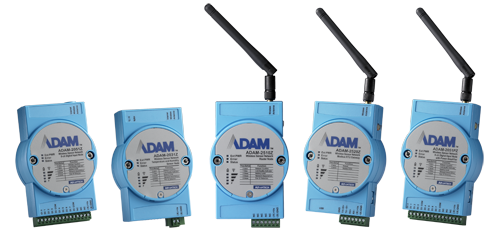The Latest Advanced Wireless I/O Modules:
ADAM-2000Z series

Leading industrial automation solutions provider, Advantech, has released its latest wireless I/O modules. The ADAM-2000Z series, utilizes the IEEE 802.15.4 standard I/O and latest sensor technology whilst supporting 2.4GHz mesh networking to provide the flexibility and build a cost-effective distributed monitoring system. The wireless ADAM-2000Z series includes six modules, including a Modbus/RTU gateway, router node, and I/O and the sensor devices listed below. With an outstanding design, the ADAM-2000Z series features low power consumption, ensured data integrity, Modbus/RTU protocol support, a high degree of accuracy of 16 bits for AI module and a wireless site survey tool in the ADAM Utility. Regarding the lower power consumption, just 2 x AA alkaline batteries will keep the devices updated at 1-minute intervals for a year.
In addition, the ADAM-2000Z series supports the Modbus/RTU protocol so that it can be connected to other Modbus modules without any additional software or cost. The control of the ADAM-2000Z Series can be easily integrated into most HMI and SCADA devices using the Modbus/RTU protocol. Configuring a reliable wireless network, site survey is an important task; the ADAM-utility includes the site survey tool, “Topology”, for users to get a module’s status and wireless communication quality. For the network capacity, the ADAM-2000Z series can connect up to 32 nodes, including router and end devices.
Based on the advantages above, the ADAM-2000Z series is the ideal wireless data acquisition solution.
The wireless ADAM-2000Z series:
| ADAM-2510Z |
Wireless Router Node |
| ADAM-2520Z |
Wireless Modbus RTU Gateway |
| ADAM-2031Z |
Wireless Temperature & Humidity Sensor Node |
ADAM-2017Z |
Wireless 6-ch Analog Input Node (Coming soon) |
ADAM-2051Z |
Wireless 8-ch Digital Input Node |
ADAM-2051PZ |
Wireless 8-ch Digital Input Node with Power Amplifier
|
|